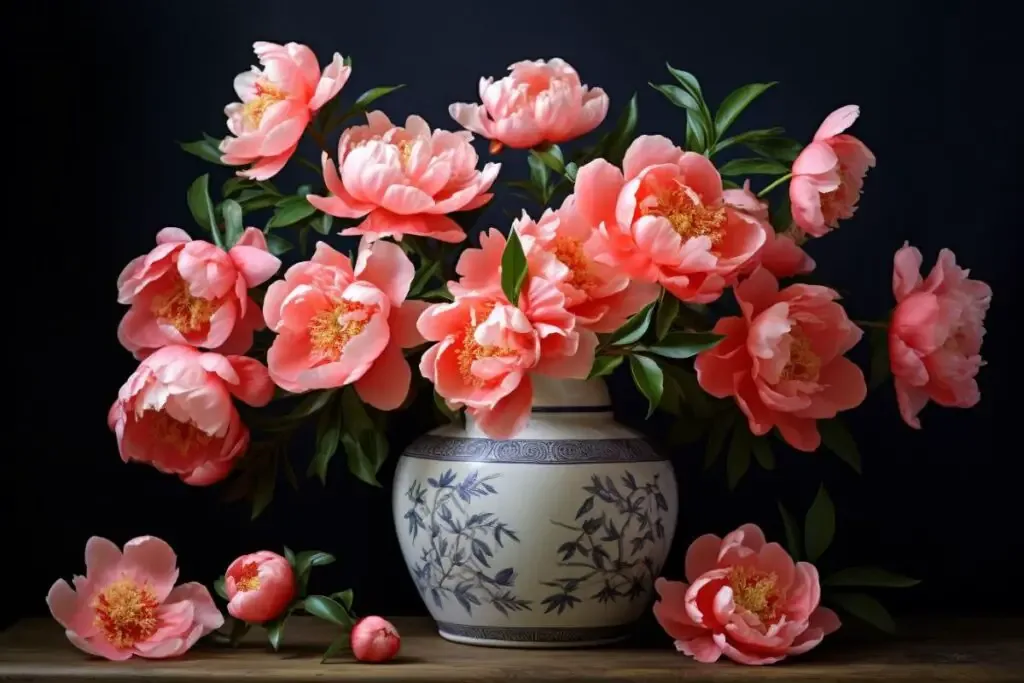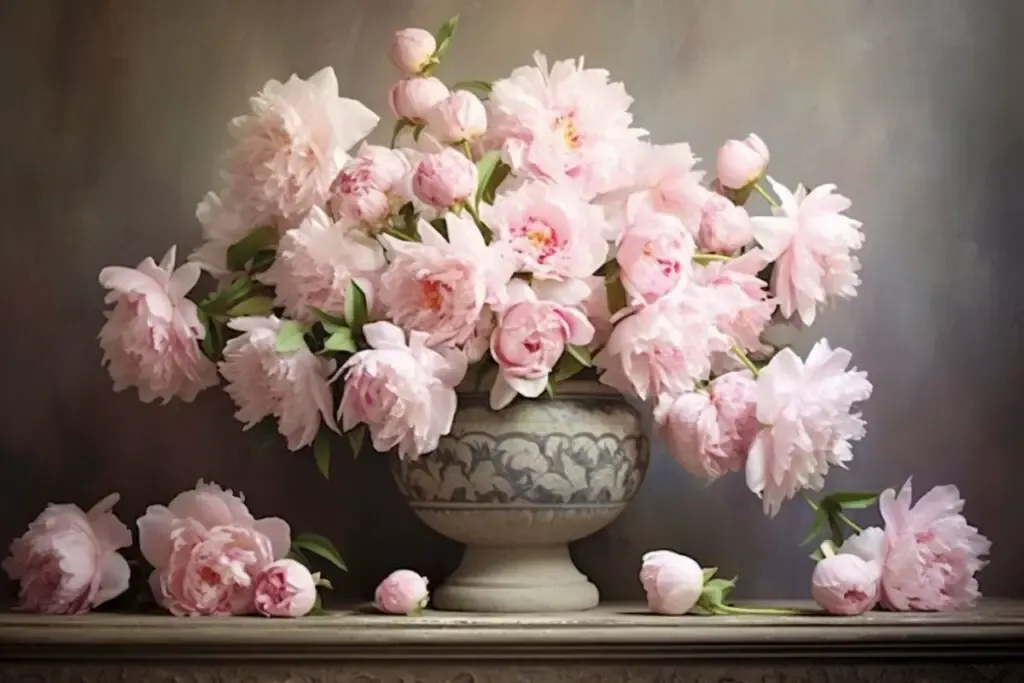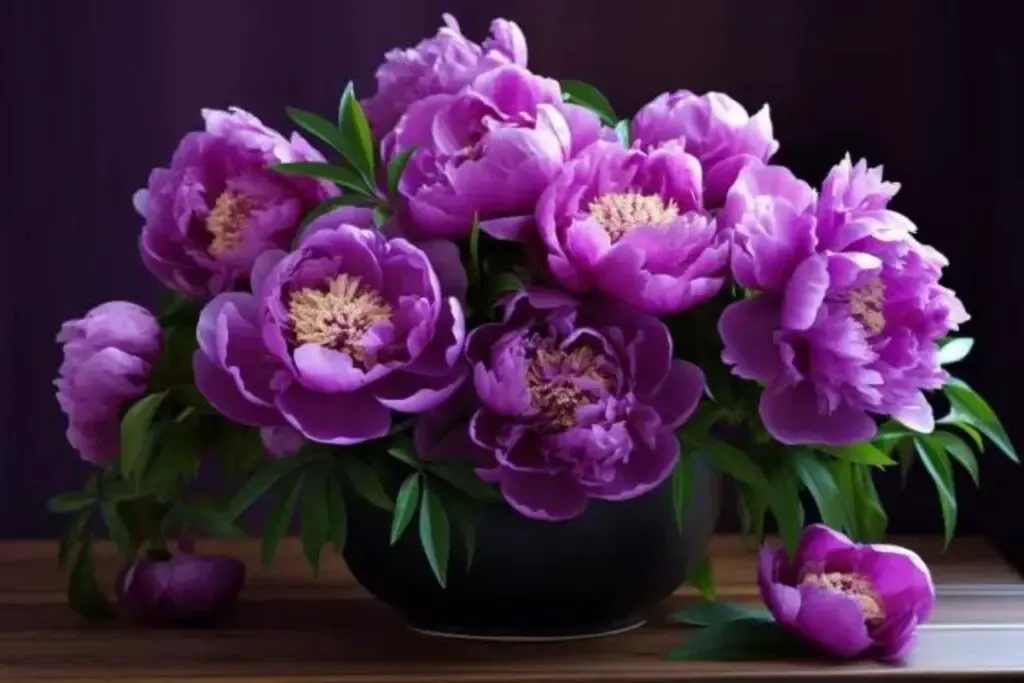Peonies are the showstoppers of the garden, with their lush foliage and extravagant blooms that come around each spring like clockwork, signaling the end of chilly days.
For those with limited space or just a passion for container gardening, the question often arises: Can these beauties thrive in pots?
Let’s dive into the world of peonies and discover how to grow them in pots like an expert.
Do Peonies Grow Well in Pots?
The simple answer is yes, peonies can grow wonderfully in pots. The key to success lies in the size of the pot, the soil you use, and how you care for it.
Peonies have deep root systems, so they prefer spacious pots that allow them to stretch out. This means a large, deep container is non-negotiable.
In pots, peonies require a bit more attention than their in-ground counterparts. They need well-draining soil to prevent root rot and consistent watering, as pots can dry out faster than the earth. But don’t let this intimidate you!
With some dedication and a watchful eye, your potted peonies can be just as breathtaking as any garden-planted peony.
Best Peony Varieties for Pots
Not all peonies are created equal when it comes to pot living. Some varieties adapt better to the confined space and still bloom year after year with the right care.
Let’s look at three varieties that are known for their container compatibility.
1. Coral Charm

‘Coral Charm’ is a captivating peony variety that steals the show with its vibrant coral blossoms that transform into pale ivory as they age. Its sturdy stems make it a great candidate for pots, as it doesn’t require extensive staking.
This peony’s unique color and ability to change hues make it a personal favorite for many gardeners, adding an exotic touch to your container garden.
2. Sarah Bernhardt

The ‘Sarah Bernhardt’ peony is a classic with its large, fluffy double pink flowers and a sweet fragrance that fills the air.
This variety is particularly forgiving for novice gardeners and is well-suited for life in a pot. Its resilience and prolific blooming make ‘Sarah Bernhardt’ a trustworthy choice for ensuring a spectacular spring display on your patio or balcony.
3. Bowl of Beauty

The ‘Bowl of Beauty’ is a herbaceous peony that presents a striking contrast with its deep pink petals encircling a creamy center.
This variety is not only beautiful but also compact, making it an ideal peony for pot culture. The ‘Bowl of Beauty’ is not just a feast for the eyes but is also quite drought-tolerant once established, reducing the anxiety over constant watering.
How to Grow and Care For Peonies in Pots
Growing peonies in pots can be a fulfilling endeavor for any plant lover. While they are traditionally thought of as a garden plant, with a little know-how, you can enjoy these floral treasures up close on your deck, patio, or balcony.
Planting
The best time to plant peonies in pots is in the fall, which gives them time to establish their roots before the warm growing season.
When planting, position the peony so that the eyes (tiny red buds) are 1-2 inches below the surface of the soil. This is crucial, as planting too deep can prevent the peony from blooming.
Pot Size
A generously sized pot is essential for peonies to thrive. Choose a container that’s at least 18-24 inches in diameter and equally deep to accommodate the extensive root system.
Ensure it has ample drainage holes to avoid waterlogging, which can be detrimental to the plant.
Light
Peonies love the sun and require around 6-8 hours of direct sunlight to produce those large, ruffled blooms. If you’re growing peonies in a less sunny area, they may still grow, but with fewer blooms.
Remember, morning light is especially beneficial as it dries the dew on the leaves, reducing the risk of fungal diseases.
Soil
The soil in your pot should be well-draining and fertile. A mixture of potting soil and compost is ideal, providing both nutrition and proper drainage.
Peonies don’t like to sit in wet soil, so ensuring that your potting mix is airy and loose is key to healthy growth.
Water
Watering is a balancing act with potted peonies. They need consistently moist soil, but it’s important not to overwater.
Typically, a deep watering once a week should suffice, but this can vary based on temperature and weather conditions. The surface of the soil can feel dry, but underneath it should be damp.
Temperature and Humidity
Peonies are quite hardy and can withstand colder temperatures, which makes them perfect for cooler climates.
However, they do not like to be too wet or too dry, so maintaining a moderate level of humidity around the plant is beneficial. In extreme heat, afternoon shade can help protect the blooms and foliage.
Fertilizer
Fertilizing peonies in pots is essential because the nutrients in the pot will deplete over time. Use a balanced slow-release fertilizer in the spring as the leaves are emerging.
You can also use a liquid fertilizer periodically during the growing season to give them an extra boost, which helps in producing lush foliage and vibrant blooms.
Pruning Potted Peonies
Pruning is an important part of peony care, especially when they’re grown in pots. After the blooming season, usually late summer or fall, you’ll want to cut back the foliage to help prevent overwintering diseases. Always use clean, sharp pruners to make precise cuts.
Remove any fading flowers throughout the growing season to keep your plant looking tidy and to encourage more blooms. However, be cautious not to over-prune, as this can reduce the following year’s flowers. Peonies store energy in their foliage for the next year’s growth, so leave as much green as possible.
When fall arrives and the leaves start to yellow, you can cut the stems down to about 3 inches above the soil line. This not only cleans up the plant but also helps direct the plant’s energy towards root and shoot development for the next season.
Overwintering
Overwintering peonies in pots requires some attention since the roots are more exposed to the cold than those in the ground. Here’s how to ensure your potted peonies make it through the winter:
- Once you’ve pruned the peony back in the fall, consider moving the pot to a sheltered location, like against a building or under a deck, where it’s protected from harsh winds.
- If you live in an area with severe winters, you might need to insulate the pot. Wrapping the container with burlap or bubble wrap can provide extra warmth.
- Avoid overwatering before the onset of cold weather, as this can lead to root rot, particularly if the pot does not drain well in the event of heavy rain or snow.
- Do not fertilize in late summer or fall since new growth can be damaged by the cold.
- In the spring, once the danger of frost has passed, move your pot back to its sunny location and begin your regular watering routine to awaken your peony for another glorious season.
With proper care during the growing season and thoughtful protection during the winter, your potted peonies will survive and flourish year after year.

